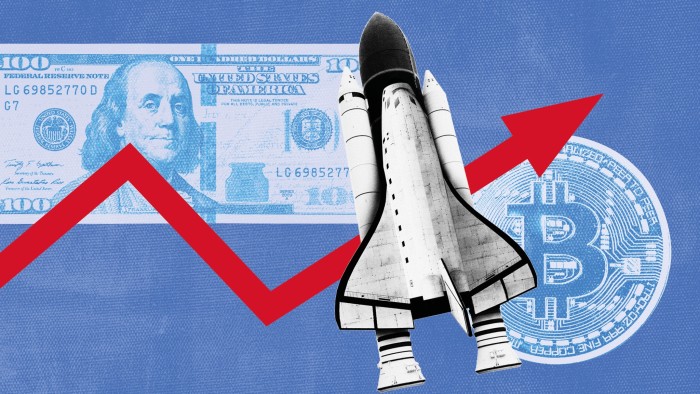My left-field investment ideas for 2024


Roula Khalaf, Editor of the FT, selects her favourite stories in this weekly newsletter.
The most interesting investment story of 2023 was how all the experts and commentators — me included — got the market so wrong. Along with many others, I thought we’d be mired in a recession with stocks getting a good beating. How wrong we were.
But I’m not about to let that stop me putting out some adventurous investment thoughts for 2024.
Most measures of financial market volatility are presently very low — in fact well below their long-term averages. It nonetheless feels potentially volatile out there. Even if you don’t subscribe to the view that we’re slipping into a slowdown, there are plenty of reasons — not least electoral — to think that matters might be about to get more turbulent.
Hedging against an uptick in volatility is tricky for most private investors but two vehicles stand out. The first is BH Macro, a listed hedge fund which tends to do well when markets wobble, and less well when the bulls are rampant. The other is spread betting and trading firm Plus500. This Israel-based money machine churns out lots of cash even when markets are turbulent but trading always picks up when markets go a bit skew-whiff.
I’m nervous about the continued strength of the dollar in an election year with plenty of hazards on the horizon. On most trade weighted measures, we’re now at peak dollar and there is a decent chance that that might reverse. That would favour non-US markets but one in particular tends to do very well when the dollar weakens — local currency emerging market debt.
This is an under-owned asset class and you can access it via local currency ETFs from the likes of iShares (iShares J.P. Morgan EM Local Government Bond UCITS ETF, ticker SEML). It has none of the China risk associated with emerging markets equities and produces a useful yield which might also benefit from local currency appreciation.
More of the corporate world is going private (bad news for a UK market with lots of mature companies on low valuations). Despite my qualms about the private equity model, I’ve come to believe that all long-term investors need some exposure to both private equity and venture capital.
The problem until now has been valuing these assets given the possibility of a slowdown and the cost of rising debt. That’s especially true for venture capital, which has been badly hit, with plunging valuations and IPO pipelines blocking up. My sense is that we might have hit the trough for VC valuations — while, according to analysts at Jefferies, private equity values might actually be picking up.
Given that there are still chunky discounts on many listed private equity vehicles, now might be a good time to start drip feeding cash into carefully chosen funds such as OCI, Hg Capital and fund of fund Pantheon International. Arguably, the biggest upside sits with listed venture capital funds such as Chrysalis and Molten Ventures.
I’ve grown more optimistic about Seraphim Space investment trust which has been on the receiving end of some negative comment — including from me — over its failure to drop its valuations over the past few years. It has always maintained that the space market is an exception and that valuations are holding up. Recent transactions suggest it might be right, which would make the fund dirt cheap.
Sticking with the private assets theme, the infrastructure and renewables funds sector has been hit by increasing interest rates and declining power prices. That’s pushed many well-respected funds into big discounts. Recently, these have started narrowing along with the prospect of lower interest rates. Yet there are still some outliers with chunky discounts that I don’t think are warranted.
Take SDCL Energy Efficiency Income Trust (SEIT), which cut its valuations because of higher interest rates (via an increased discount rate). It is now at a 38 per cent discount and has a well-backed dividend yield at more than 11 per cent. Or Cordiant Digital Infrastructure, which has been caught up in the troubles impacting data centre investment trust Digital 9.
Cordiant is rolling out a solid strategy of owning data centres and fibre networks (and mobile phone towers) across Europe. It trades at a 35 per cent discount and yields over 5.5 per cent. I would expect to see discounts on both Cordiant and SEIT narrow appreciably to the 20 to 30 per cent range.
Meanwhile, here are two big but very different momentum plays where even more upside is possible: bitcoin and uranium. I have no great passion for cryptocurrencies, but I recognise that turning them into ETFs and then building bitcoin tracker funds into asset allocation strategies could be transformational. Of course there’s the halving that takes place every four years for bitcoin to maintain its scarcity — and is fast approaching this spring.
You can of course buy into simple tracker vehicles, but I have one very left field idea: Phoenix Digital Assets, formerly known as NFT Investments. It was listed on Aquis to invest in — you guessed it — non-fungible tokens. When that market lost momentum the fund pivoted, using the launch cash to buy cryptocurrencies. It is now effectively a UK-listed vehicle for holding crypto assets, including bitcoin and ethereum. The curiosity is that if we take the recent announcements at face value, the business is trading at a discount of more than 40 per cent to those volatile assets.
Uranium prices have also shot up. I’ve long championed the nuclear renaissance story on these pages and I’m sticking with the central view that there will be more demand for uranium oxide. That demand will switch from long-term contracts to short-term spot markets, propelling the price ever higher.
We’ve seen a rapid increase past $100 an ounce but talk to the experts such as alternative assets house Ocean Wall and they think over the next year or so that price could go far higher. If that does happen then the recent upward price momentum in the share price for Yellow Cake (an Aim physical holdings company which owns stocks of uranium oxide) and Geiger Counter (a listed uranium equities fund that invests in uranium miners) could go much, much higher.
I’ll finish with the war in Ukraine. I very much hope the Ukrainians score a decisive victory against the Russians, but the possibility of some kind of frozen conflict must be increasing. If that is the case, we could see something approaching a few years of relative calm on the flanks of Russia — possibly as it rearms — which could be good news for investors in places like Poland and Georgia.
Polish equities have done well, but could do even better. One way to access them is through an iShares ETF ticker EPOL (iShares MSCI Poland ETF). Georgia to the south is best accessed via the UK-listed Georgia Capital fund. The shares have already bounced in the last year — up 42 per cent — but still trade at a ridiculous 53 per cent discount. Its biggest holding is Bank of Georgia — which by any measure is the cheapest UK-listed bank.
David Stevenson is an active private investor. He has holdings in Yellow Cake, NFT Investments, Cordiant, Seraphim, Chrysalis, Hg, OCI and Plus500. Email: adventurous@ft.com. Twitter: @advinvestor.
Comments